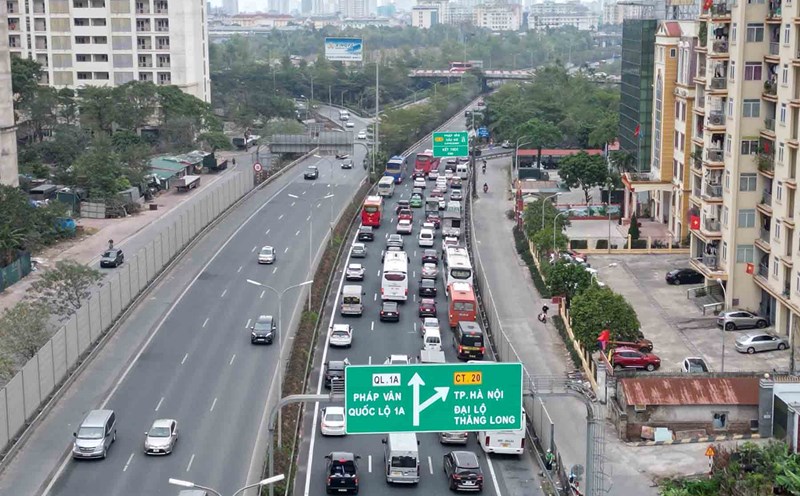On March 11, the Ho Chi Minh City People's Committee chaired a scientific workshop on the implementation of Resolution No. 57-NQ/TW dated December 22, 2024 of the Politburo on breakthroughs in the development of science, technology, innovation and national digital transformation.
The event was organized by the Department of Science and Technology of Ho Chi Minh City in coordination with the Science Department of Ho Chi Minh City National University, with many discussion and exchange sessions from experts.
At the workshop, the Chairman of the Ho Chi Minh City People's Committee stated that the locality has time, land, and human resources to successfully implement Resolution 57.
Ho Chi Minh City has very special resources, a gateway to connect and trade nationwide, said Mr. Nguyen Van Duoc.
According to the Chairman of the Ho Chi Minh City People's Committee, in recent times, the locality has been the growth pole of the country, the place where the brain center of universities and research institutes with high-quality human resources is located.
In addition, Ho Chi Minh City is also a gathering place for many large enterprises, both domestic and foreign. Due to the special resources, according to Mr. Nguyen Van Duoc, the city needs to have a different strategy and way of going.
The Chairman of the Ho Chi Minh City People's Committee said that the locality has proposed a 1-4-1 strategy. In which, 1 - International Financial Center; 4 - Multi-purpose high-tech center (including AI, data, semiconductor chips), high-tech industrial park, high-quality healthcare, high-quality education; 1 - Strategic infrastructure investment including transport infrastructure and digital infrastructure.
In the coming time, the Chairman of Ho Chi Minh City hopes that the Ho Chi Minh City Research Institute and Ho Chi Minh City National University will organize a workshop related to the International Financial Center to clarify the planning, functions, position, and human resources. He also hopes that businesses will clarify the necessary policies to promote science and technology, such as land incentives, taxes as well as other issues.
Some goals of Ho Chi Minh City when implementing Resolution 57 to 2030, vision to 2045:
Ho Chi Minh City's research and development (R&D) budget for the program reached 2% of GRDP; allocated at least 3% of the total annual budget expenditure for science, technology development, innovation, digital transformation and gradually increasing according to development requirements.
Ho Chi Minh City strives to become one of the digital technology industrial centers of the country; in the group of 100 cities with the most dynamic innovative startup ecosystem in the world; the group of 3 provinces and cities leading in innovation and digital transformation. The rate of digital technology enterprises is leading the country.
Ho Chi Minh City is also determined to form 5,000 innovative startups; 5 centers for applied research and innovation approaching international standards (CoE) in key areas; promote and support the formation of 5-10 large technology enterprises; human resources for scientific research, technology development, and innovation reach 12 people/10,000 people.
Ho Chi Minh City is in the group of 5 provinces and cities leading the country in terms of competitiveness and development of digital government. The rate of online public service use by people and businesses reached over 80%, the rate of non-cash transactions reached over 80%, the rate of contribution of total factor productivity (TFP) to economic growth was over 55%.
The locality also strives for the digital economy to contribute about 40% to GRDP; develop at least 1 new concentrated IT park. Attract some of the world's leading technology organizations and enterprises to set up headquarters and invest in research and production in Ho Chi Minh City, including at least 1 strategic investor in the High-Tech Park.
In addition, Ho Chi Minh City also aims to develop advanced digital infrastructure, gradually mastering a number of strategic technologies and digital technologies such as: Artificial Intelligence, Internet of Things (IoT), big data, cloud computing, block chains, semiconductor microchips, 5G, 6G mobile information, satellite information and some emerging technologies...
By 2045, Ho Chi Minh City strives to become a center for research and application of high technology in Southeast Asia. The city's innovation ecosystem is aiming to be in the top 50 urban areas in the world. Ho Chi Minh City aims to have at least 5 research and application and innovation centers meeting international standards and the scale of the digital economy reaching at least 50% of GRDP.











